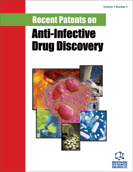
Abstract
Legionella are aerobic, gram-negative, motile, rod-shaped bacteria, which form a distinct taxonomic unit within the γ - 2 subdivision of the Proteobacteria. The reservoirs of Legionella are natural or man-made water systems where the bacteria survive and disseminate as obligate intracellular parasites of free living protozoa. In the human lung, the bacteria invade alveolar macrophages inducing the potentially lethal pneumonia commonly known as Legionnaires disease. Although all Legionella species are considered potentially pathogenic for humans, Legionella pneumophila is the aetiological agent responsible for most reported cases of community- and nosocomially-acquired legionellosis. The Opolysaccharide in the lipopolysaccharide of L. pneumophila is composed of a repeating homopolymer of α-(2→4)-linked 5,7-diamino-3,5,7,9-tetradeoxy-D-glycero-D-galacto-non-2-ulosonic acid (legionaminic acid). The outer region of the core enriched with 6-deoxy sugars and N- and O- acetylated sugars as well as the highly N- and O-acylated O-chain contribute to a high hydrophobicity of the bacterial surface, which enables these bacteria to spread. Lipids A from Legionella contain a backbone with 2,3-diamino-2,3-dideoxy-D-glucose and unusual fatty acids. The present article indicates some patents useful in the diagnostics of Legionnaires disease.
Keywords: Somatic antigen, endotoxin, Legionellaceae, lipopolysaccharide
 7
7





















